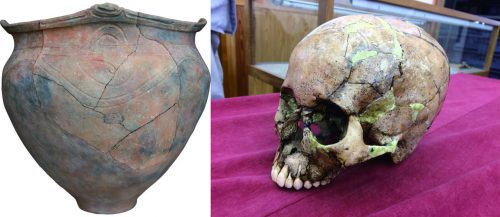The Japanese archipelago, occupied by humans for at least 38,000 years, underwent fast transformations inside the past 3,000 years, first from foraging to moist rice farming and then to country formation. Lengthy-standing speculation advised that mainland Japanese populations derive dual ancestry from indigenous Jomon hunter-gatherer-fishers, who inhabited the Japanese archipelago from around 16,000 to a few,000 years in the past, and succeeding Yayoi farmers, who migrated from the Asian continent and lived in Japan from round 900 BCE to 300 CE. In new studies, scientists from Japan and Ireland diagnosed a later inflow of East Asian ancestry through the imperial Kofun duration, which lasted from around 300 to seven hundred CE. In addition, they noticed the emergence of political centralization in Japan.
“Researchers had been learning increasingly more about the cultures of the Jomon, Yayoi, and Kofun durations as increasingly historical artifacts display up, however earlier than our studies we knew relatively little about the genetic origins and impact of the rural transition and later nation-formation section,” said Professor Shigeki Nakagome, a researcher inside the School of Medicine at Trinity College Dublin.
“We now recognize that the ancestors derived from each of the foraging, agrarian, and kingdom-formation levels made a full-size contribution to the formation of Japanese populations today.” “In quick, we have a completely new tripartite version of Japanese genomic origins — in preference to the twin-ancestry model that has been held for a full-size time.”
The authors sequenced 12 ancient Japanese genomes spanning 8,000 years of the Japanese archipelago’s pre-and protohistory in their new studies. “To our information, this is the largest set of time-stamped genomes from the archipelago, inclusive of the oldest Jomon character and the primary genomic data from the imperial Kofun duration,” they said.
“We additionally covered five posted prehistoric Japanese genomes in our analysis: three Jomon people in addition to 2,000-12 months-vintage people associated with the Yayoi culture from the northwestern a part of Kyushu Island.” In addition to the overarching discovery, the researchers found that the Jomon maintained a small, robust populace size of around 1,000 over numerous millennia, with a deep divergence from continental populations dated to twenty,000-15,000 years in the past — a period which noticed Japan come to be extra geographically insular via growing sea-degrees.
The Japanese archipelago had emerged as on hand through the Korean Peninsula at the beginning of the Last Glacial Maximum, a few 28,000 years ago, permitting motion. And the widening of the Korea Strait sixteen,000 to 17,000 years ago because of growing sea-tiers may have brought about the subsequent isolation of the Jomon lineage from the rest of the continent.
These time frames additionally coincide with the oldest proof of Jomon pottery manufacturing.
“The indigenous Jomon humans had their particular lifestyle and lifestyle inside Japan for heaps of years before the adoption of rice farming all through the subsequent Yayoi period,” stated first creator Dr. Niall Cooke, additionally from the School of Medicine at Trinity College Dublin. “Our evaluation certainly reveals them to be a genetically wonderful population with a strangely excessive affinity between all sampled people — even the ones differing using lots of years in age and excavated from sites on one of a kind islands.”
“These results strongly recommend a prolonged duration of isolation from the relaxation of the continent.” The spread of agriculture is frequently marked by population substitute, as documented within the Neolithic transition throughout most of Europe, with most effective minimal contributions from hunter-gatherer populations observed in many regions.
However, the scientists located genetic proof that the rural transition in prehistoric Japan worried the technique of assimilation, instead of replacement, with almost equal genetic contributions from the indigenous Jomon and new immigrants associated with wet-rice farming. Several traces of archaeological evidence guide the advent of new significant settlements to Japan, maximum likely from the southern Korean Peninsula, throughout the Yayoi-Kofun transition.
And the analyses offer sturdy aid for the genetic exchange worried in the advent of new social, cultural, and political traits on this nation-formation segment. “The Japanese archipelago is an, in particular, thrilling a part of the arena to investigate the usage of a time series of historical samples given its wonderful prehistory of lengthy-standing continuity observed through speedy cultural changes,” stated co-writer Professor Dan Bradley, a researcher within the School of Genetics and Microbiology at Trinity College Dublin. “Our insights into the complicated origins of contemporary-day Japanese yet again suggests the electricity of historic genomics to discover new statistics approximately human prehistory that could not be seen in any other case.”

Fantastic perspective. I thought it to shed light on something great to understand. I expect additional great posts from this website.